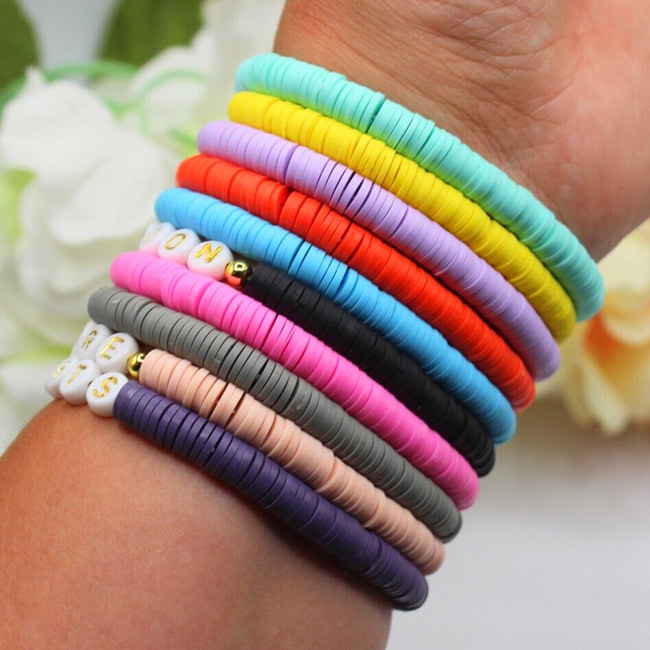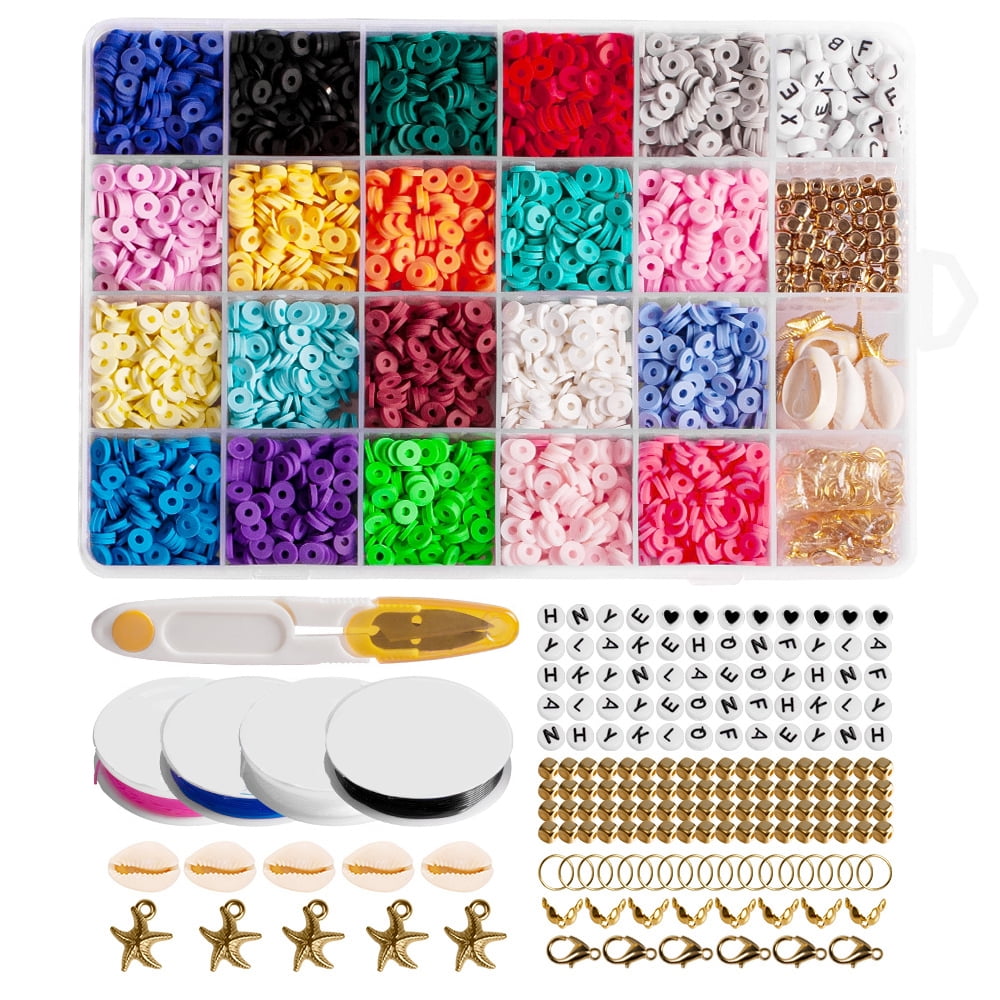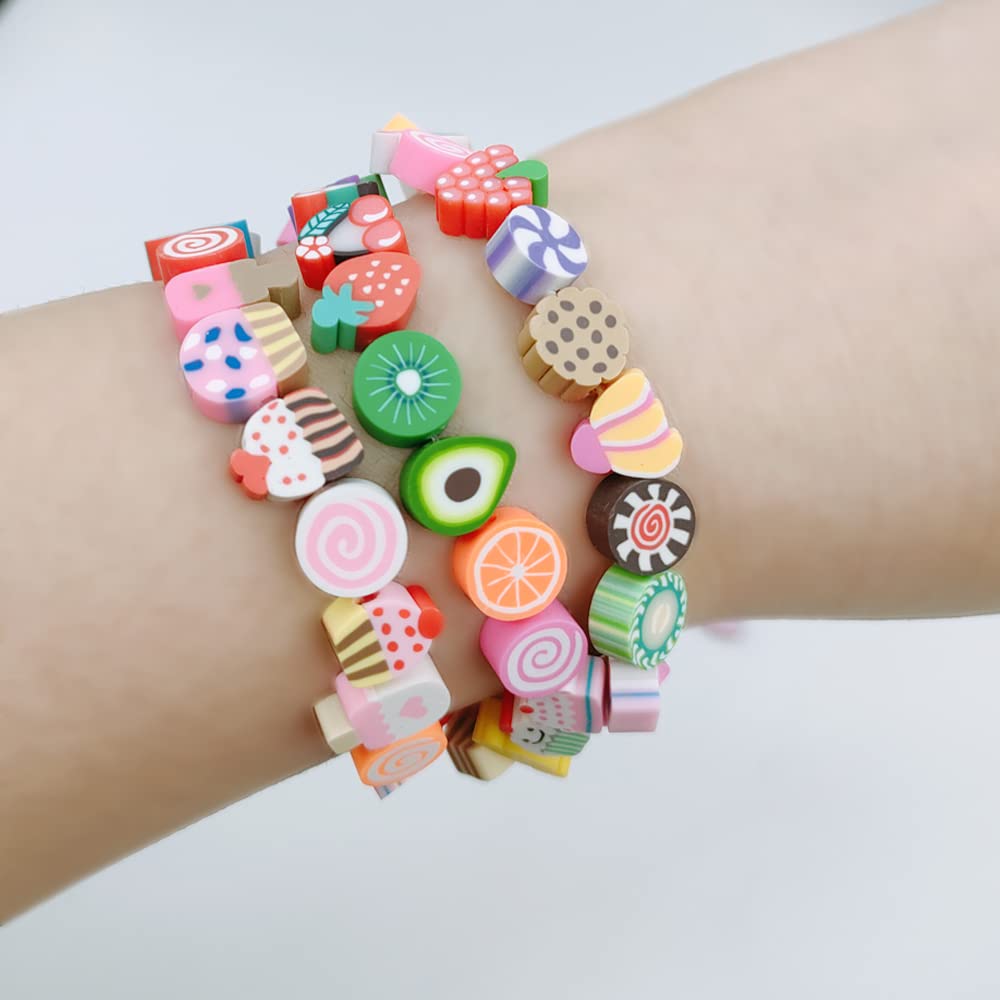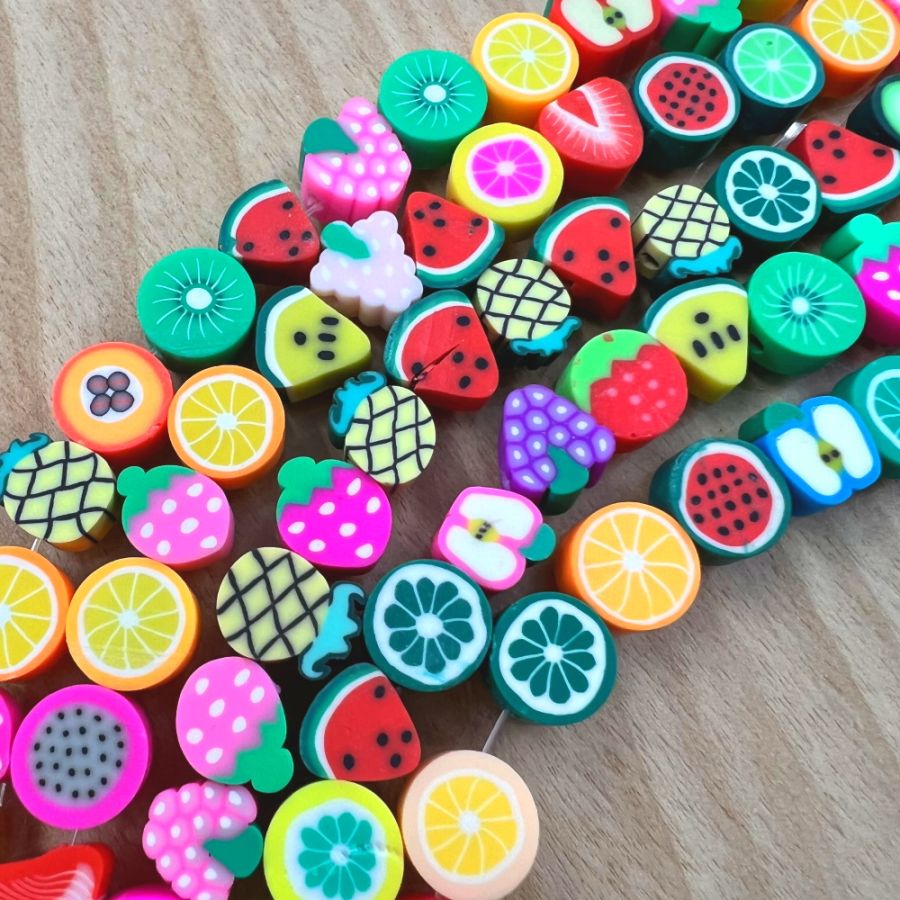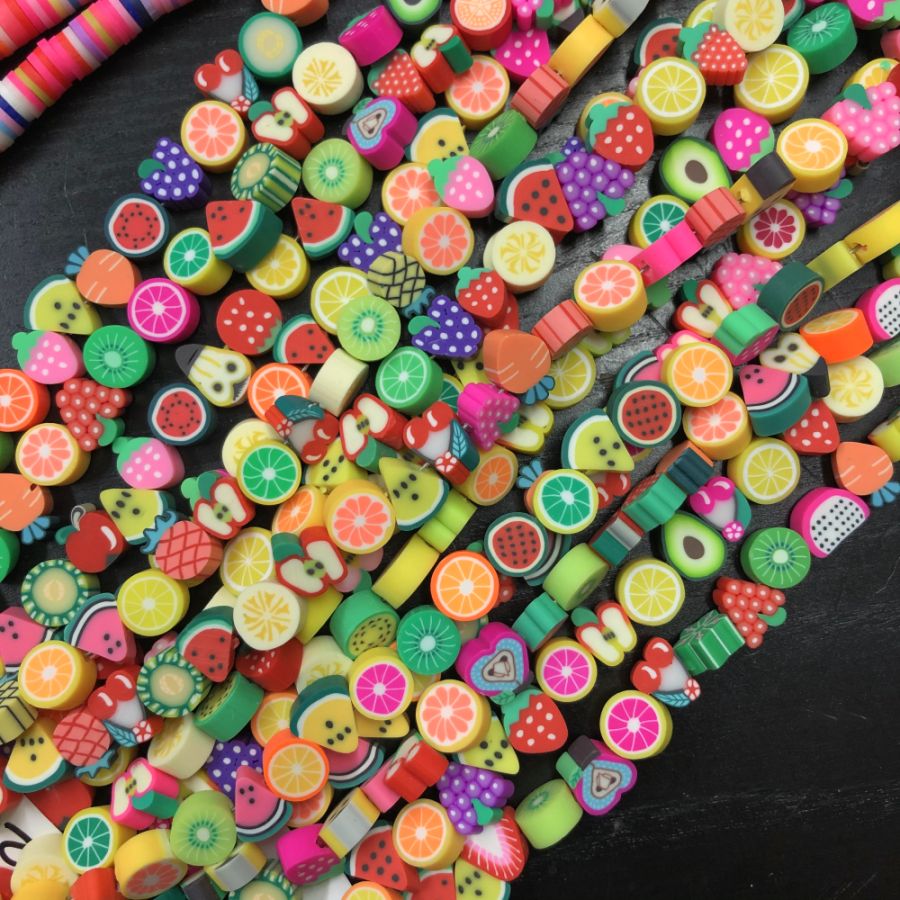Clay beads have been cherished for centuries across various cultures. Their versatility and aesthetic appeal make them popular among artisans and hobbyists alike. The journey of clay beads spans continents and times, embodying a rich history that continues to fascinate craft lovers today. With their unique textures, colors, and styles, clay beads offer endless possibilities for creativity. This article explores the history, types, crafting techniques, and the resurgence of clay beads in contemporary society.
A Brief History of Clay Beads
The Ancient Origins
Clay beads have a history that dates back thousands of years. Evidence shows that early humans created beads for both functional and ornamental purposes. Archaeological finds reveal that beads were made from natural materials. In ancient cultures, beads served as currency, status symbols, and religious artifacts. For instance, in Egypt, clay and faience beads adorned the jewelry of the elite. Similarly, Native American tribes incorporated clay beads into their traditional regalia.
These beads often carried significant cultural meanings. They represented social status, fertility, or spirituality. Many ancient civilizations used beads as a form of communication, conveying messages within their communities. This use of clay beads as symbols throughout history is remarkable. As craft techniques evolved, so did the usage of clay beads, leading to their diverse application in various cultures.
The Global Significance
Crafting clay beads spread globally, facilitating exchange between cultures. In Africa, for example, artisans began creating unique beadwork using clay. This tradition has survived through generations and remains vital to many cultures. In regions like West Africa, bead-making became a communal activity, bringing families and communities together. Likewise, Indigenous cultures in the Americas also embraced bead-making traditions, contributing to the rich tapestry of bead artistry.
Moreover, clay beads often featured local motifs, showcasing the identity of communities. Each bead reflected its maker’s heritage and artistic vision. The global significance of these beads lies not only in their craftsmanship but also in their stories. Today, artisans seek to preserve these traditions while also innovating new designs. This blend of old and new practices creates an enduring legacy that continues to inspire.
Types of Clay Beads
Natural vs. Synthetic Clay Beads
When considering clay beads, it is essential to differentiate between natural and synthetic options. Natural clay beads are made from raw clay material and fired in a kiln. This process provides durability and a unique texture. They often display a rustic charm, reflecting the natural variations in clay. Artists can also add natural pigments, enhancing their color palette. Because each bead is handmade, this results in unique variations.
On the other hand, synthetic clay beads are created using polymer clay. This type of clay offers more color options and is generally easier to mold. Since it can be baked in a home oven, it is popular among hobbyists. Additionally, synthetic clay beads can maintain a consistent look, which appeals to some artisans. Nonetheless, both types can be used to create stunning jewelry and crafts. Therefore, the choice between natural and synthetic beads often comes down to personal preference and desired effect.
Specialty Clay Beads
Beyond the basic classifications, there are many specialty clay beads. For instance, some artists use air-dry clay, which doesn’t require firing. This material allows for even greater creativity, as it can be easily shaped and painted. Another unique option is Raku beads, which result from a specific firing technique. Raku beads have distinct textures and vibrant colors, often resulting from the reduction process used in firing.
Additionally, decorative clay beads come adorned with intricate designs and finishes. These beads often incorporate techniques such as marbling, embossing, or glazing. Their visual appeal can elevate any jewelry piece, making them stand out. Artisans often combine different types of clay beads to create cohesive designs. This approach showcases the breadth of artistic vision available to creators in the bead-making industry.
Crafting with Clay Beads
Basic Techniques for Beginners
If you’re eager to start crafting with clay beads, understanding basic techniques is crucial. First, gather your materials, including clay, tools, and a workspace. Kneading the clay helps to make it pliable and free of air bubbles. Once the clay is prepared, you can shape it into beads. Rolling the clay into small balls or forming unique shapes is a fun process.
After shaping the beads, it’s essential to create a hole for stringing. Using a skewer or toothpick, carefully poke a hole through each bead. Once this is complete, it’s time for the beads to dry. Depending on the type of clay, drying times vary. After the beads are dry, many artisans choose to paint or glaze them for added beauty. This finishing touch enhances their visual appeal while adding personal flair.
Advanced Techniques for Experienced Crafters
For those with more crafting experience, advanced techniques can enhance your designs. For instance, you can explore the use of molds to create uniform shapes. Molding allows for intricate designs that may be difficult to achieve by hand. Techniques such as layering or stringing multiple pieces together can also add depth to your creations. Additionally, experimenting with different textures, such as carving or imprinting, can result in unique looks.
Moreover, surface treatments like patina or antiquing can provide a vintage feel. By applying these methods, you can give your clay beads character and dimension. Combining various crafting techniques opens new avenues for artistic expression. Ultimately, advanced crafting invites experimentation and innovation, which keeps the art of bead-making exciting and vibrant.
The Resurgence of Clay Beads in Contemporary Crafting
Popularity in the Handmade Community
Recently, clay beads have regained popularity within the handmade crafting community. Many crafters appreciate their uniqueness and personalization options. The rise of DIY culture has encouraged individuals to create their unique jewelry. As a result, social media platforms have become vital for sharing designs and tutorials. Platforms like Instagram and Pinterest make it easy to find inspiration and showcase creations.
Moreover, modern trends in jewelry emphasize individuality. Crafting with clay beads allows designers to express their styles fully. With numerous colors, textures, and shapes, crafters can create one-of-a-kind pieces. Handmade items resonate with consumers seeking authenticity. As a result, the demand for unique, personal jewelry continues to grow. This trend highlights the enduring appeal of clay beads in contemporary society.
Environmental Considerations
Additionally, the rise in clay bead crafting aligns with growing environmental awareness. Many consumers seek sustainable and eco-friendly materials. Natural clay presents an attractive option, as it is abundant and biodegradable. Artisans increasingly prioritize using materials that are not harmful to the environment. This shift reflects a broader trend towards sustainability within the crafting community.
Many artisans also promote minimal waste practices when crafting. For example, leftover clay can be reused to create more beads. This practice not only reduces waste but also fosters creativity. As consumers become more eco-conscious, they appreciate products made with intention. Thus, sustainable practices in clay bead crafting contribute to the craft’s resurgence.
The Rising Trend of Clay Bead Jewelry
Influences in Jewelry Design
The trend of clay bead jewelry has skyrocketed in recent years. Influencers on social media platforms have popularized these pieces. As a result, many jewelry makers are experimenting with colors and patterns. Consequently, this has led to increased demand for unique, handcrafted items. Beyond aesthetics, the tactile quality of clay gives the jewelry a contemporary artisanal feel. Buyers seek out these items due to their craftsmanship and individuality.
DIY Clay Bead Jewelry Kits
With the rise in popularity, many brands now offer DIY clay bead kits. These kits provide an accessible avenue for crafting enthusiasts. They typically include everything needed to create personalized jewelry. From colorful clay and tools to instructions, these kits appeal to various age groups. As a result, crafting jewelry at home has become a fun, creative pastime. Families often bond over these activities, sharing skills and ideas. Consequently, this trend encourages creative expression and enables personal storytelling through wearable art.
Conclusion: The Timeless Appeal of Clay Beads
In conclusion, clay beads are more than just materials for jewelry-making. They represent a rich artistic heritage that transcends time and geography. The journey of clay beads from ancient cultures to contemporary craft scenes is inspiring. As artisans explore new techniques and designs, the possibilities remain endless. This enduring art form continues to captivate people of all ages.
As the handmade movement grows, so does interest in clay bead crafting. The revival of these beads highlights their versatility and aesthetic value. Moreover, the incorporation of sustainable practices underscores the importance of both artistry and responsibility. Ultimately, clay beads are here to stay, serving as a canvas for creativity and personal expression. Whether you’re a beginner or an experienced crafter, there’s always more to discover in the world of clay beads. Embracing this craft can lead to a rewarding experience filled with inspiration, community, and artistic growth.
